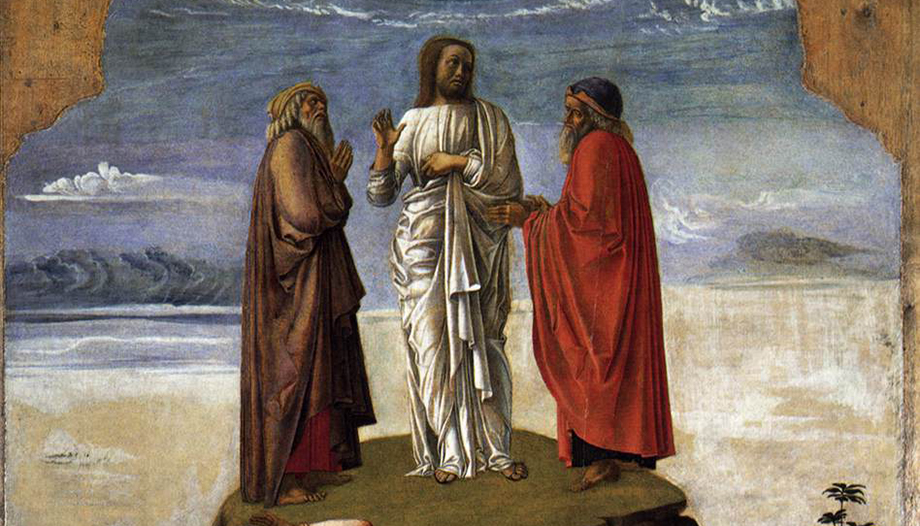Luke places the Transfiguration of Jesus, like Matthew and Mark, after the first announcement to the apostles of his passion, death and resurrection and after the invitation to take up the cross every day and follow him, to lose one's life for him and thus save it. In this framework, the mystery acquires one of its most important meanings. Jesus gives to the three closest apostles an anticipation of his resurrection and a visibility of his divinity, which illuminates his humanity, his face and also his garments that, then more than today, highlighted the role and dignity of the person.
Luke's account adds three details to those of Matthew and Mark. The first is the prayer. Jesus goes up the mountain to pray, and during the dialogue with the Father there is the shining of his face and the shining of his garment. It makes us want to follow Jesus on the mountain to imitate him in prayer and to let ourselves be enlightened, like him, by the love of the Father: "The Lord is my light and my salvation: whom shall I fear?" "Hide not thy face from me, O God of my salvation." (Ps 26).
The second is the subject of the conversation with Moses and Elijah: "They spoke of his exodus, which he was to consummate in Jerusalem." Jerusalem is very present as the goal of the whole Gospel of Luke, and above all as the goal of the life of Jesus: his exodus is the passion and death on the Cross, with the Resurrection and Ascension into heaven. The Ascension is in Luke the summit and the conclusion of his Gospel, the exodus of Jesus-man towards the heavenly Jerusalem to sit at the right hand of the Father. And it is also at the beginning of the Acts of the Apostles and, therefore, of the history of the Church: "You shall be my witnesses in Jerusalem, and in all Judea and Samaria, and to the ends of the earth.".
The third original detail of Luke is the dream that befalls the three apostles. The first reading, on God's covenant with Abram, offers us an interpretation of this dream. Abram prepares the rite of the covenant according to the customs of the time: animals cut in two parts, in the middle of which the contracting parties passed to indicate that the same fate would have befallen them if they had transgressed the covenant. But, because of Abram's dream, only God passed between the cut animals. God's covenant is unilateral, conceived and offered to his people by him as an act of unconditional love. We can receive this gift, accept this grace. And, to do so, the Transfiguration shows us the way: to follow Jesus to the mountain of prayer to be enlightened by God; to accompany Jesus on his way to the cross and resurrection, and the Ascension into heaven; and then, to be witnesses of him everywhere, with the power of the Holy Spirit, and the company of friends in heaven and on earth.
The Homily in one minute
The priest Luis Herrera Campo offers its nanomiliaa small one-minute reflection for these readings.









